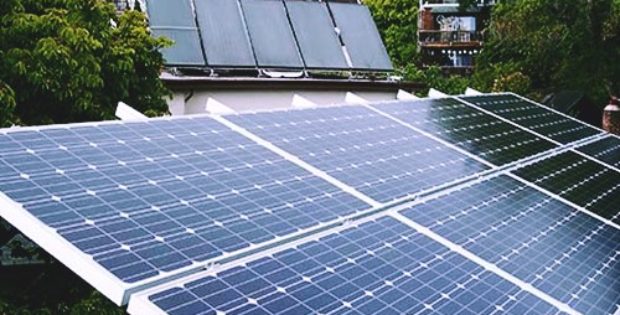Global Molten Salt Solar Energy Thermal Storage and Concentrated Solar Power Market Report 2018 includes a total amalgamation of assessable trends and predicting analysis. This Molten Salt Solar Energy Thermal Storage and Concentrated Solar Power analysis offers an approach for a large number of clients. Employing accredited global Molten Salt Solar Energy Thermal Storage and Concentrated Solar Power market data resources together with various practices and tools to successfully get and study information, our accredited group of analysts, researchers, and advisors has obtained extra efforts in calling the global sector. The Molten Salt Solar Energy Thermal Storage and Concentrated Solar Power report suggests that the newest and also the very consistent statistics necessary for organizations in the global industry as a way to sustain in a competitive sector.
The report introduces the Molten Salt Solar Energy Thermal Storage and Concentrated Solar Power basics: definitions, categories, software and market review; product specifications; fabricating procedures; cost arrangements, development and so forth. Subsequently, it studied the international major Molten Salt Solar Energy Thermal Storage and Concentrated Solar Power industry market requirements, for example, merchandise price, profit, capacity, production, distribution, market and demand growth speed and prediction, etc. In the long run, the report introduced a new Molten Salt Solar Energy Thermal Storage and Concentrated Solar Power SWOT analysis, feasibility, and revenue investigation.
Get Sample Copy of Report at: https://market.biz/report/global-molten-salt-solar-energy-thermal-storage-and-concentrated-solar-power-market-gir/81777/#requestforsample
Top Players have been included from the report are: Thai Solar Energy, Abengoa, BrightSource Energy, ESolar, Sunhome, Acciona, Wilson Solarpower, Novatec, SolarReserve, SUPCON, ACWA, Areva and Shams Power
Type analysis:
Parabolic Trough Systems
Power Tower Systems
Dish/Engine Systems
Application analysis:
Generate Electricity
Industrial Heating
Molten Salt Solar Energy Thermal Storage and Concentrated Solar Power Report from Types, Application, along with Geography — International Forecast to 2023 is just indeed a skilled and comprehensive research study on the world’s major regional economy states, concentrating on the significant regions like Asia-Pacific, Middle East and Africa, South America, North America and Europe and the top states like Brazil, United States, Nigeria, Egypt, Southeast Asia, France, Germany, Mexico, India, Canada, Argentina, South Africa, Italy, Korea, Russia, UAE, Colombia, Japan, China, UK and Saudi Arabia.
Inquiry Regarding the Report at: https://market.biz/report/global-molten-salt-solar-energy-thermal-storage-and-concentrated-solar-power-market-gir/81777/#inquiry
The significance of this Report:
1. Industry Synopsis of International Molten Salt Solar Energy Thermal Storage and Concentrated Solar Power Market;
2. Global Molten Salt Solar Energy Thermal Storage and Concentrated Solar Power Market Company Manufacturers Overview and Profiles;
3. Technical Data and Manufacturing Plants of Economy;
4. Capacity, Revenue, and Production Analysis;
5. Cost, price, Gross and Gross Fiscal Analysis of Molten Salt Solar Energy Thermal Storage and Concentrated Solar Power by Regions, Manufacturers, and Types;
6. Consumption Volume, Consumption Value and Sale Price Analysis of Molten Salt Solar Energy Thermal Storage and Concentrated Solar Power business share by Assessing, Types, and Software;
7. Supply, Import, Export and Presence Analysis of Molten Salt Solar Energy Thermal Storage and Concentrated Solar Power Market;
8. Significant Manufacturers Analysis of Molten Salt Solar Energy Thermal Storage and Concentrated Solar Power Market Size;
9. Marketing Trader or Distributor Analysis;
10. Industry Chain Analysis;
11. Development Trend Analysis of Molten Salt Solar Energy Thermal Storage and Concentrated Solar Power Market Trends;
12. New Project Feasibility Analysis of Molten Salt Solar Energy Thermal Storage and Concentrated Solar Power;
By application and country, the global Molten Salt Solar Energy Thermal Storage and Concentrated Solar Power report highlights the magnetism of top nations and segment together with the assistance of various tools.
The general study contains Molten Salt Solar Energy Thermal Storage and Concentrated Solar Power value chain analysis which provides comprehension of significant players from the distribution chain, especially which range from manufacturers to end-users. Moreover, the report supplies the Molten Salt Solar Energy Thermal Storage and Concentrated Solar Power international economic competition with the assistance of Porter’s Five Forces Analysis.



























